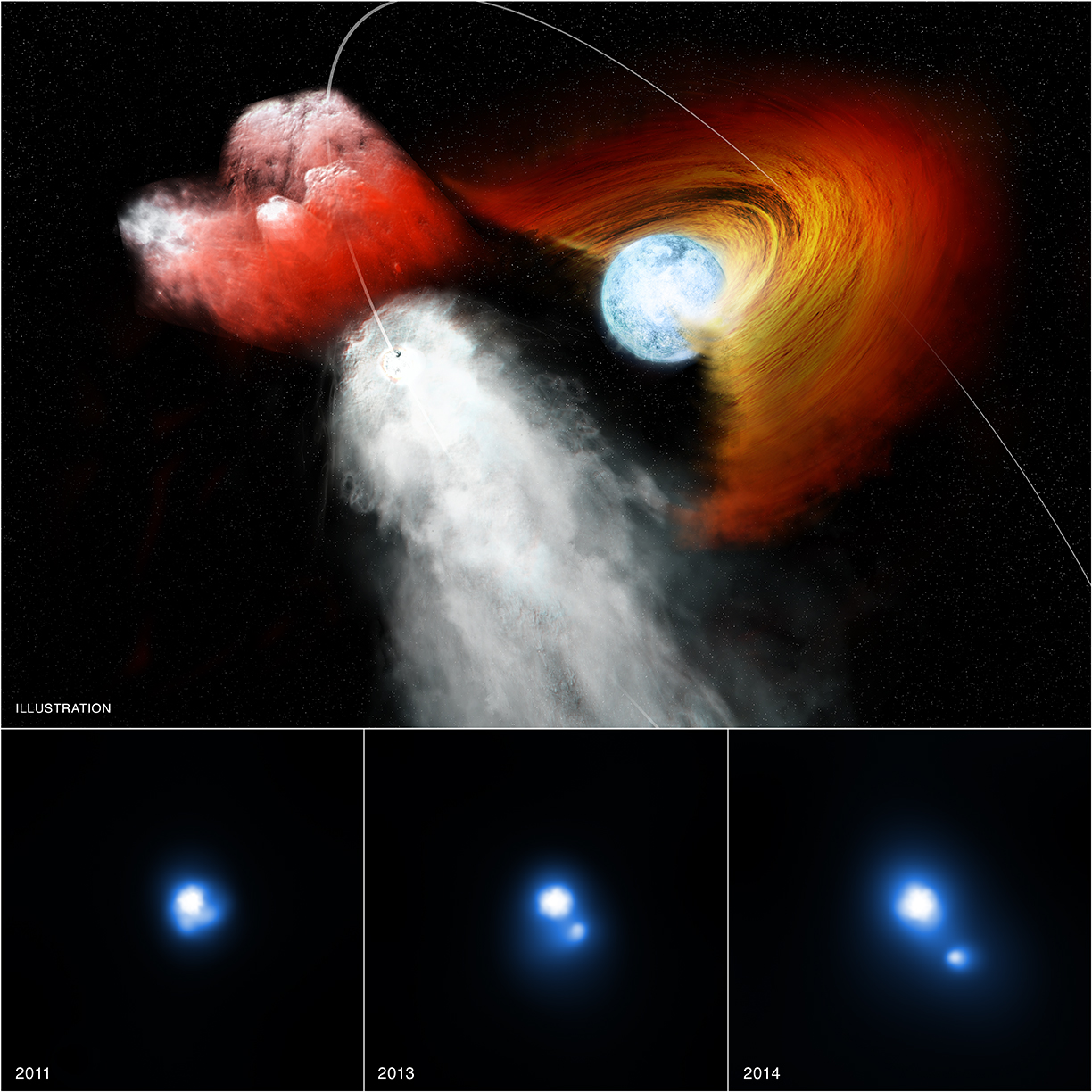
A fast-moving pulsar appears to have punched a hole in a disk of gas around its companion star and launched a fragment of the disk outward at a speed of about 40 million miles per hour. NASA’s Chandra X-ray Observatory is tracking this cosmic clump, which appears to be picking up speed as it moves out.
The double star system PSR B1259-63/LS 2883 – or B1259 for short – contains a star about 30 times as massive as the Sun and a pulsar, an ultra-dense neutron star left behind when an even more massive star underwent a supernova explosion.
The pulsar emits regular pulses as it spins 20 times a second, and moves in a highly elliptical orbit around its companion star. The combination of rapid rotation and intense magnetic field of the pulsar has generated a strong wind of high-energy particles moving away from the pulsar at near the speed of light.
The massive companion star, meanwhile, is rotating close to break-up speed and is spinning off a disk of material. As the pulsar makes its closest approach to the star every 41 months, it passes through this disk
“These two objects are in an unusual cosmic arrangement and have given us a chance to witness something special,” said George Pavlov of Penn State University in State College, Pennsylvania, lead author of a paper describing these results. “As the pulsar moved through the disk, it appears that it punched a clump of material out and flung it away into space.”
Even though the clump is rather large, spanning a hundred times the size of our Solar System, it is also quite thin. The material in it has the mass equivalent to all the water in the Earth’s oceans.
“After this clump of stellar material was knocked out, the pulsar’s wind appears to have accelerated it, almost as if it had a rocket attached,” said co-author Oleg Kargaltsev of George Washington University (GWU) in Washington, DC.
Astronomers observed B1259, which is located about 7,500 light years from Earth, three times with Chandra between December 2011 and February 2014. These observations show the clump moving away from B1259 at an average speed of about 7% of the speed of light. The data also indicate that the clump has been accelerated to 15% of the speed of light between the second and third observations.
“This just shows how powerful the wind blasting off a pulsar can be,” said co-author Jeremy Hare, also of GWU. “The pulsar’s wind is so strong that it could ultimately eviscerate the entire disk around its companion star over time.”
The X-ray emission observed by Chandra is likely produced by a shock wave created as the pulsar’s wind rams into the clump of material. The ram pressure generated by this interaction could also accelerate the clump.
Chandra will continue monitoring B1259 and its moving clump with observations scheduled for later this year and in 2016.
These results appeared in the June 20, 2015 issue of The Astrophysical Journal and are available online. NASA’s Marshall Space Flight Center in Huntsville, Alabama, manages the Chandra program for NASA’s Science Mission Directorate in Washington. The Smithsonian Astrophysical Observatory in Cambridge, Massachusetts, controls Chandra’s science and flight operations.
Read More from NASA’s Chandra X-ray Observatory.
For Chandra images, multimedia and related materials, visit: https://www.nasa.gov/chandra


























